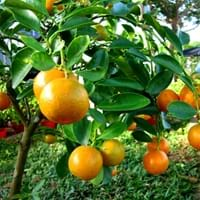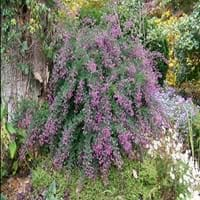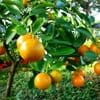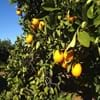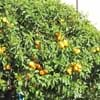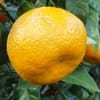Life Span
Perennial
Perennial
Origin
Southeastern Asia, Japan
China, Japan
Types
Clementines, dancy, fallglo, lee
Lespedeza davurica, Lespedeza davidii, Lespedeza caraganae
Number of Varieties
Not Available
Habitat
Subtropical climates, Tropical regions
Fields, meadows, Terrestrial
USDA Hardiness Zone
8-11
5-8
Sunset Zone
H1, H2, 8, 9, 12, 13, 14, 15, 16, 17, 18, 19, 20, 21, 22, 23, 24
3a, 3b, 4, 5, 6, 7, 8, 9, 14, 15, 16, 17, 18, 19, 20, 21
Habit
Oval or Rounded
Arching/Fountain-shaped
Flower Color
White, Red, Purple
Rose, Violet
Flower Color Modifier
Bicolor
Bicolor
Fruit Color
Green, Orange
Sandy Brown
Leaf Color in Spring
Green, Dark Green
Light Green, Sea Green, Blue Green
Leaf Color in Summer
Green, Dark Green
Light Green, Blue Green
Leaf Color in Fall
Green, Dark Green
Not Available
Leaf Color in Winter
Light Green
Light Green
Leaf Shape
Lance shaped
Compound
Plant Season
Spring, Summer, Fall, Winter
Summer
Sunlight
Full Sun, Partial Sun
Full Sun, Partial Sun, Partial shade
Type of Soil
Loam, Sand
Clay, Loam, Sand
The pH of Soil
Acidic, Neutral
Acidic, Neutral, Alkaline
Soil Drainage
Well drained
Well drained
Bloom Time
Spring, Late Spring, Early Summer
Early Summer, Summer, Late Summer
Tolerances
Drought
Drought
Where to Plant?
Ground
Ground
How to Plant?
Grafting, Seedlings
Divison, Seedlings, Semi-hardwood cuttings
Plant Maintenance
Medium
Medium
Watering Requirements
Average Water Needs, occasional watering once established, Water more in summer
Average Water Needs, Do Not over Water, Requires regular watering
In Summer
Lots of watering
Lots of watering
In Spring
Moderate
Moderate
In Winter
Average Water
Average Water
Soil pH
Acidic, Neutral
Acidic, Neutral, Alkaline
Soil Type
Loam, Sand
Clay, Loam, Sand
Soil Drainage Capacity
Well drained
Well drained
Sun Exposure
Full Sun, Partial Sun
Full Sun, Partial Sun, Partial shade
Pruning
Remove damaged leaves, Remove dead branches, Remove dead leaves, Requires little pruning
Prune in early spring, Prune in late winter, Remove damaged leaves, Remove dead branches, Remove dead leaves, Remove dead or diseased plant parts
Fertilizers
20-10-10, All-Purpose Liquid Fertilizer
Apply 12-12-12 amounts
Pests and Diseases
Aphids, Beetles, Earwigs, Leafminers, Red blotch
Red blotch
Plant Tolerance
Cold climate, Drought
Drought
Flower Petal Number
Single
Single
Fragrant Flower
Yes
Not Available
Fragrant Bark/Stem
Yes
No
Showy Foliage
Yes
Not Available
Foliage Texture
Medium
Fine
Foliage Sheen
Glossy
Matte
Attracts
Beetles, Birds, Butterflies, Insects, Leaf Hoppers, Rabbits
Birds, Butterflies
Allergy
no allergic reactions
Rash, Skin rash
Aesthetic Uses
Not Used For Aesthetic Purpose
Showy Purposes
Beauty Benefits
Glowing Skin, Skin Problems
Not Available
Environmental Uses
Air purification
Air purification
Medicinal Uses
Aging, Antioxidants, High blood pressure, High cholestrol, Skin Disorders
Not Available
Part of Plant Used
Fruits
Flowers
Other Uses
Used for its medicinal properties
Showy Purposes
Used As Indoor Plant
Yes
No
Used As Outdoor Plant
Yes
Yes
Garden Design
Container, Edible, Feature Plant, Fruit / Fruit Tree, Hedges, Houseplant, Mixed Border, Topiary / Bonsai / Espalier
Container, Groundcover, Mixed Border
Botanical Name
CITRUS reticulata 'Armstrong'
LESPEDEZA thunbergii
Common Name
Armstrong Tangerine, Tangerine
Thunberg's bushclover, Thunberg's lespedeza, and shrub lespedeza
In Hindi
संतरा
Bush Clover Shrub
In German
Mandarine
Bush Clover Strauch
In French
mandarine
Bush Clover Arbuste
In Spanish
mandarina
Bush Clover arbusto
In Greek
μανταρίνι
Μπους Τριφύλλι θάμνων
In Portuguese
tangerina
Trevo de arbusto Arbusto
In Polish
mandarynka
Bush Clover Krzew
In Latin
Tangerine
Trifolium Frutex Bush
Phylum
Magnoliophyta
Magnoliophyta
Class
Magnoliopsida
Magnoliopsida
Clade
Angiosperms, Eudicots, Rosids
Angiosperms, Eudicots, Rosids
Tribe
Not Available
Desmodieae
Subfamily
Not Available
Faboideae
Number of Species
Not Available
Importance of Tangerine and Bush Clover
Want to have the most appropriate plant for your garden? You might want to know the importance of Tangerine and Bush Clover. Basically, these two plants vary in many aspects. Compare Tangerine and Bush Clover as they differ in many characteristics such as their life, care, benefits, facts, etc. Every gardener must at least have the slightest clue about the plants he wants to plant in his garden. Compare their benefits, which differ in many ways like facts and uses. The medicinal use of Tangerine is Aging, Antioxidants, High blood pressure, High cholestrol and Skin Disorders whereas of Bush Clover is Not Available. Tangerine has beauty benefits as follows: Glowing Skin and Skin Problems while Bush Clover has beauty benefits as follows: Glowing Skin and Skin Problems.
Compare Facts of Tangerine vs Bush Clover
How to choose the best garden plant for your garden depending upon its facts? Here garden plant comparison will help you to solve this query. Compare the facts of Tangerine vs Bush Clover and know which one to choose. As garden plants have benefits and other uses, allergy is also a major drawback of plants for some people. Allergic reactions of Tangerine are no allergic reactions whereas of Bush Clover have Rash and Skin rash respectively. Having a fruit bearing plant in your garden can be a plus point of your garden. Tangerine has showy fruits and Bush Clover has no showy fruits. Also Tangerine is not flowering and Bush Clover is flowering. You can compare Tangerine and Bush Clover facts and facts of other plants too.
